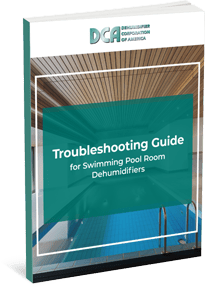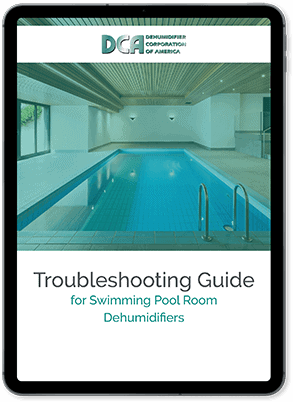Poor indoor air quality (IAQ) poses numerous risks to the occupants of any building. Low-quality air negatively impacts occupant productivity and health. It also leads to uncomfortable work and living conditions and, when left unaddressed, has the potential to damage an overall building structure. Furthermore, poor indoor air quality can go against local building code standards for indoor air quality, leaving building owners open to lawsuits.
Areas that suffer from high humidity levels tend to fare particularly poorly in terms of indoor air quality. Elevated humidity levels frequently lead to worsened air quality due to excessive moisture, which is linked to air particles, such as:
- Mold
- Dust mites
- Viruses
- Bacteria
- Allergic rhinitis
- Asthma
The litigious nature of today’s society presents a problem for those who have a hand in the construction and upkeep of buildings. Each party involved in these processes must thoroughly understand the heavy legal ramifications of unhealthy indoor environments. Low indoor air quality reflects on anyone involved in the design, construction, operation, and maintenance of a building.
These concerns leave many construction and maintenance experts wondering what the best ways are to measure and address indoor air quality, how much fresh air is enough, and how you can measure the level of fresh air already present.
How Much Fresh Air Do You Need?
The level of fresh air that your building should have is laid out by The American Society of Heating, Refrigerating, and Air-Conditioning Engineers (ASHRAE). This team of industry experts has taken steps to establish standards of care concerning the ventilation systems of institutional, residential, and commercial buildings. These steps serve as a guideline to ensure construction and maintenance professionals provide acceptable indoor air quality.
The vast majority of fresh air calculations can be traced back to specific CFM-per-person rates. These rates vary depending on a handful of factors, including the type of building and the activities that regularly occur inside, and dictate how much fresh air may be required. Buildings where high levels of vigorous activity take place often require more fresh air than offices or other similar locations.
Measuring Fresh Air
Measuring the amount of fresh air in an indoor space is simple. The percentage of outdoor air present in an indoor area can be calculated utilizing three basic temperature measurements:
- Outside air temperature (OAT), or the temperature of the air entering systems and equipment from outdoors.
- Return air temperature (RAT), or the temperature of the return air entering the equipment.
- Mixed air temperature (MAT), or the temperature past the outside air inlet where outside and return airs have mixed together.
Once measurements have been attained, calculating the percentage of outdoor air is a matter of filling in a basic formula:
Fresh air % = ((MAT – RAT) / (OAT – RAT)) X 100
Dehumidifier Solutions
One solution to correcting indoor air quality issues lies in dehumidification systems, which serve to maintain an indoor space’s humidity and air quality levels. Dehumidifiers also prevent condensation and building structure deterioration. There are numerous benefits to leveraging dehumidifiers to maintain and improve indoor air quality, including:
- Reduced humidity levels. Spaces are less susceptible to mold, dust mites, and mildew.
- Reduced odor spread. This cuts down on “musty” and “rotting” smells associated with humidity troubles.
- Reduced irritation to skin and respiratory systems. This translates to easier breathing and increased occupant comfort.
- Reduced likelihood of rust or corrosion. You’ll protect computer equipment, electronics, and tools that are easily susceptible to rust due to high humidity levels.
- Reduced energy costs. High humidity levels cause the A/C to operate longer to cool the air and remove moisture, which shortens the life of A/C systems and leads to more frequent repairs. While the A/C system is operating to lower room humidity levels specifically, the room air temperature falls to levels that are not comfortable for workers. Also, lowering room air temperature, in turn, raises the percent room relative humidity, which can be counter-productive. More efficient air conditioner operation means lower utility bills and repair costs.
Contact DCA for Fresher Air in Your Facility
If you’re struggling to determine how much fresh air your building requires, Dehumidifier Corporation of America will help. For information on how to utilize dehumidifiers as a means of air quality control, contact our team today to learn more and discuss your specific application.
Topics: Uncategorized





